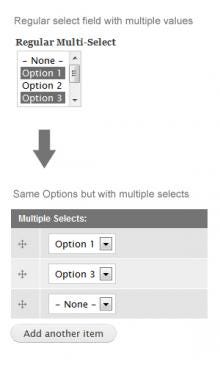
Upgrade Your Drupal Skills
We trained 1,000+ Drupal Developers over the last decade.
See Advanced Courses NAH, I know Enough16 Cool Drupal modules For site builders | Februari 2018
It took a while before I could write a new edition, I was just busy with the production of customer projects. Here again with a brand new version, what struck me in module updates in the past month:
1. D8 Editor Advanced link
A popular module that extends the standard editor in Drupal 8 with additional options for managing links. You can now add the following attributes:
- title
- class
- id
- target
- rel
2. Password strength
Default password checks are stupid and annoying for the user: they can check the entered password meets certain rules, such as the number of characters and varying types herein (symbols, numbers, capital letters etc.).
This is a stupid way of checking because the password ‘Welcome123’ is accepted, while it is easy to guess.
This module enables a secure password policy by “pattern-matching” and “entropy calculation”. Almost every type of password is accepted, as long as it has sufficient entropy.

How it works
Instead of checking strict rules, this module calculates the expected time a brute force attack needs to retrieve the password. This is calculated based on underlying patterns:
- Words that appear in a standard dictionary, common first and surnames and other default passwords.
- Words from a dictionary, but written in Leet / 1337. For example, where the “e” is written as a three and “a” like an @.
- A standard sequence of letters like “abcdef”, “qwerty” or “123456”
- Dates or years.
This module has been around since 2007, I wonder why I only encounter this now :) It is currently available in alpha for Drupal 8 and stable for Drupal 7 available — it is supported by Acquia and Card.
So if you want people to not have to bother to look for a password such as “one special character, 1 upper case and at least 8 characters’, then this module offers a solution.
3. Better Field Descriptions
In order to give content managers issues, it is possible to write an explanation of all content fields that they import. But the standard explanation in a field in the backend of Drupal are often irrelevant, to not apply these generic texts in the implemented *user story* of the installation concerned.
After installing this module you can:
- Content managers have their own explanation text per field.
- Set where it stands: above or below the field.
- The explanatory style that you like.
4. Better login
Want to make the standard Drupal login screen better? Then install this module and you are good to go: through template overrides you can then do the required further tuning of the layout of the login screen.
5. Ridiculously Responsive Social Sharing Buttons
Another social sharing module, but as you see in the title: these are terribly responsive. The icons are SVG based and you need no external services such as AddThis.
Advantage: you’re less dependent and have your data in hand, downside: you have less functionality- such as comprehensive statistics.
6. Flush Cache
If you are not using Drush or Drupal console works then you can Drupal caches flush via “the ‘Flush all caches” button in the Drupal backend. But in a production environment, you will almost never flush all caches, it can cause severe performance problems.
This module solves that problem: install it and you have more control over the caches you want to flush.
7. Multiple Selects
Have your Drupal content management easier with ‘multiple selects’ administration, this image seems to me to speak for itself:

8. Neutral paths
If you are running a multilingual Drupal website, visitors can see the content in one language: the currently active language. Sometimes you would like to see pages in another language. In addition: content managers / Drupal administrators usually want English and not the backend *default language*, in our case, often Dutch.
Issue tracking for example, much easier if the backend is in English: Drupal documentation and support in English is much more available than in Dutch.
This module ensures that you can visit other pages in another language than the default. And can navigate the backend in English, while frontend is in another language.
9. Password Reset Landing Page (PRLR)
Drupal core includes a ‘password’ function: If you have forgotten your password then you can request a one-time login link that is automatically mailed to you.
If you click on the login link, you will see a screen with a login button. Once you click the ‘login’ button you are logged in and you are redirected to your profile page — that’s it.
You are in this situation where your password is lost / forgotten. You are not required to change your password. This is not usually done, so people often endlessly request login links.
This module solves this: the screen where you end up after clicking on the login link not only contains a login button, but also a function to change your password immediately.
10. Auto Purge Users
The user list in Drupal is usually not or hardly ever administered. If people have long been inactive or have not completed their registration, the account can usually be removed to avoid overhead and security issues.
This module does it for you automatically, it checks inactivity below a point and blocks users if they meet:
- Certain time inactive.
- Account never activated after registration.
- Not been logged in for a period of time.
Not a popular module, but in the case of an example Drupal social intranet it can come in handy.
11. Vertical Tabs Config
Want to influence the order of the Drupal tabs? Or do you want some tabs to not show all of your content manager? To keep tabs simple and usable you can install this module: select which tabs to show and in what order.
Modules with similar functions: Simplify and Hide vertical tabs.
12. Custom Search
The default Drupal search is fine, but really standard: you have few options to tune the engine. After installing this module, changes that you can then include are:
- Change the default label in the search box.
- Set a default text in the search box.
- Tune ‘Advanced Search’.
- Change the text on the “submit button”.
And much more, see module page:
13. Persistent Login
Drupal 8 core does not have a ‘remember password’ function when you log in. You can remain automatically logged for some time, but that is based on a PHP session. This module does not, you can also:
- How long users can stay logged in.
- How many places a person can be logged in at once.
- Select certain pages that the user must log in again at. These are usually pages where more sensitive information is available.
- Allow the user to delete all his logins themself.
14. Realistic Dummy Content

Using the Devel module you can automatically generate content so you can see if your modules / themes work well. But it gives an unrealistic picture of the end result, this module generates more realistic images and texts.
15. Password Policy
Although I am a fan of the aforementioned ‘Password strength’ module, this can also be useful if you want to make a specific password policy on your Drupal website.
16. Mass Password Reset
This module, we often use to implement Drupal social intranet: previously, all users and content created by an administrator on a test environment, without it people were informed through e-mail.
Once the social intranet went live, we sent all users at once an email with a login link via this module; the system was live!
Wrap Up
So far that’s what I noticed last month in Drupal modules, stay tuned for more fat Drupal content!
About Drupal Sun
Drupal Sun is an Evolving Web project. It allows you to:
- Do full-text search on all the articles in Drupal Planet (thanks to Apache Solr)
- Facet based on tags, author, or feed
- Flip through articles quickly (with j/k or arrow keys) to find what you're interested in
- View the entire article text inline, or in the context of the site where it was created
See the blog post at Evolving Web

